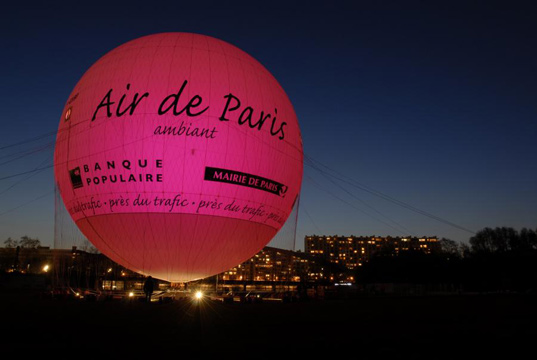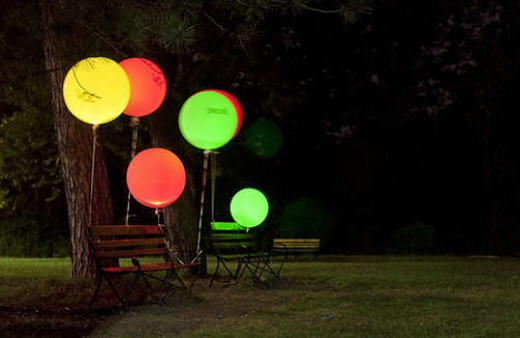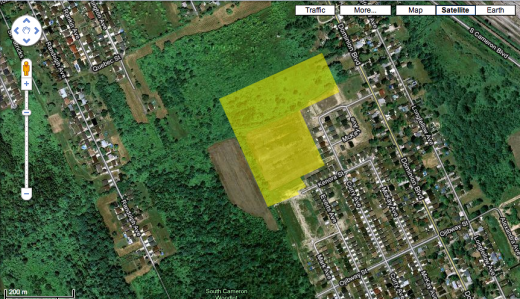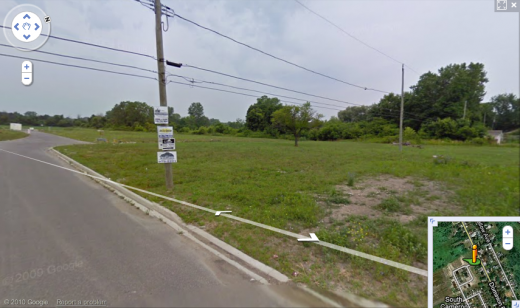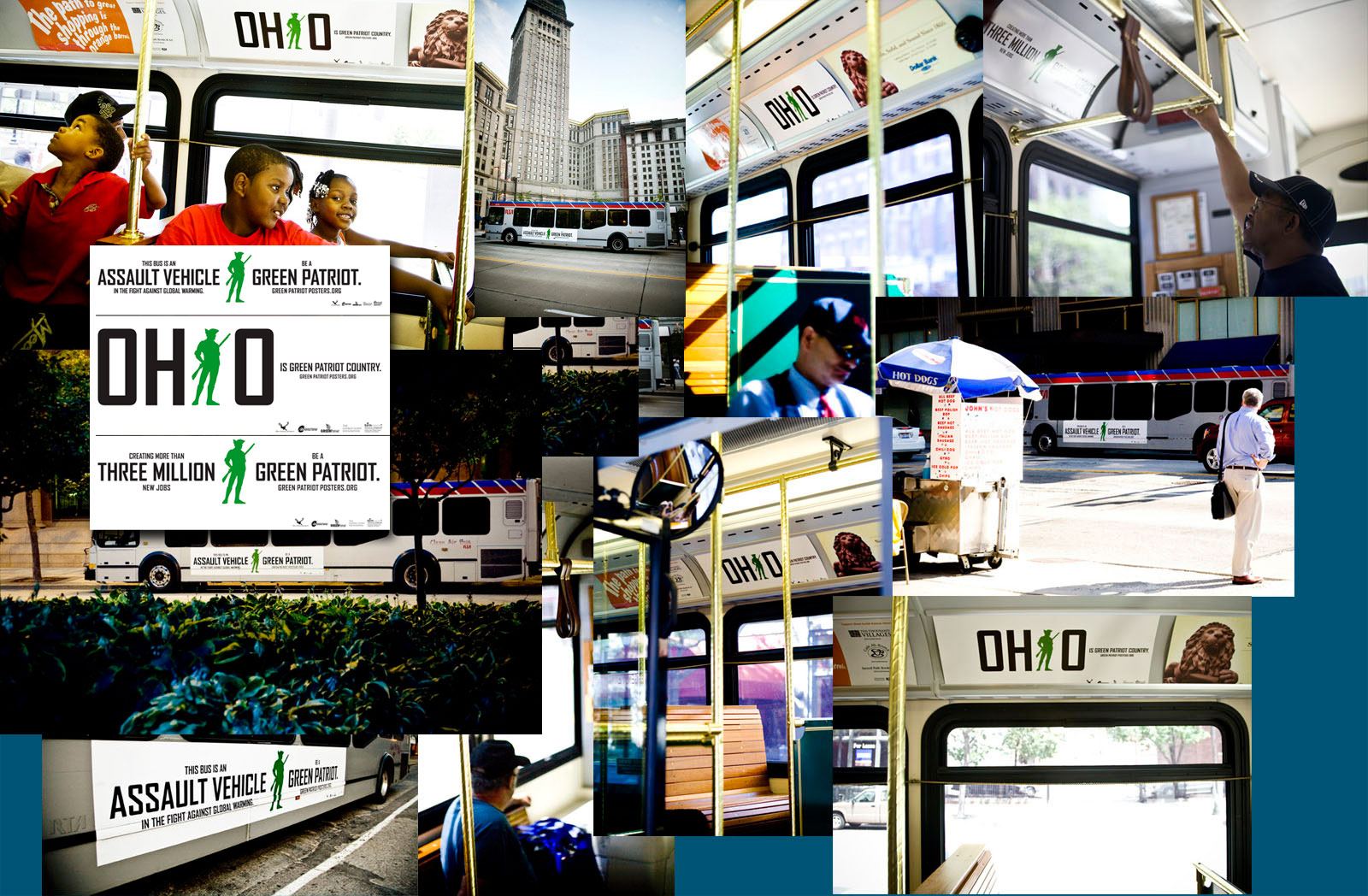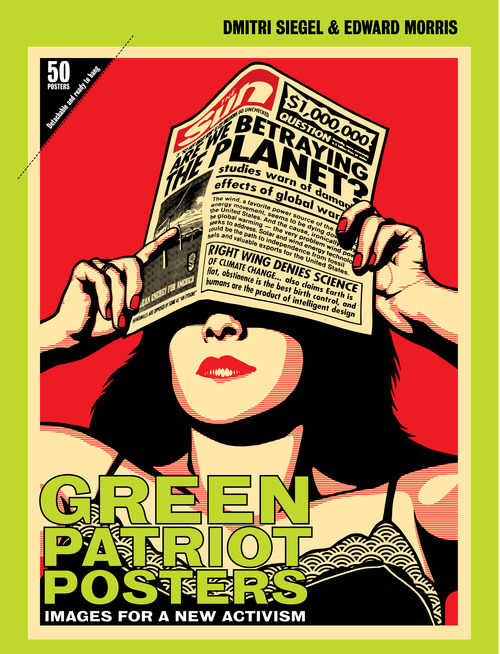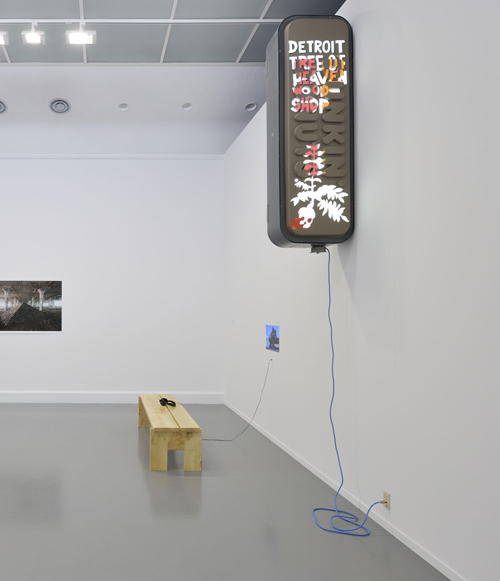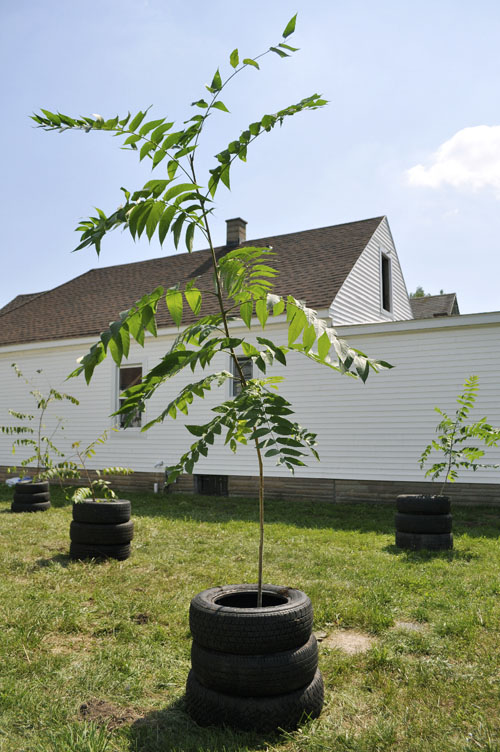I found this post not too long ago and have been wanting to make one of these ever since. What’s making these balloons glow is the pollutants in the air around them, with colours ranging from green (signifying excellent air quality) to red (poor air quality).
Neighbourhood Deterioration and Suburbanism
As I think about where I live, in a subdivision off of dominion road near the Holy Name of Mary Highschool, I immediately think of the current hollowing and cutting into the forest and brush that’s going on to make room for more houses, and more roads. The illumination of this by me is quite ironic however, considering my family and I live in one of these very suburban houses.
It’s obvious this has negative impacts on the wildlife that exists. I see coyotes almost every night trotting just outside the back of the house. During the winter months (such as it is now), we tend to leave dry corn in a wooden box with some apples in the backyard. Some nights I’ve counted 12 dear hanging out just behind my house.
It’s interesting to think of how the literal physical border of this city, via the road and the backs of houses, keep cutting further and further into this small forest landlocked in the middle of the city of Windsor.
This is an older image taken from Google Earth, but I have highlighted one of the sections where they have clear cut the forest and brush. (There’s another large area they have cut on the other side of the bush that I couldn’t fit into the image). The area in yellow today is full of empty streets, and empty lots with pipes sticking out of the ground.
I guess where I am getting may be partly an environmental awareness and a defense for this landlocked micro-environment, but also an awareness of the suburbanism that has occurred in a city where its downtown core has not been kept up infrastructurally speaking, and has been ‘hollowed out’, so to speak.
Suburban housing development has not only contributed to the hollowing out of the downtown core, but also has been a result of various things such as dependency on economic sectors (auto industry, higher paying jobs, etc…), which has allowed those fortunate enough to buy a house away from the deteriorating core of Windsor itself. The core isn’t getting the economic, social, and infrastructural attention it needs to function in a more cohesive and economically and culturally integrated way (especially considering how the Windsor/Detroit area has had so much potential of economic integration in the past with the integration of the auto industry. But as we know, Detroit is also suffering from neighbourhood deterioration).
I think these conversations also imply other things such as generalizations of classes of people in both cities being a large contributer to the attention (or lack of) payed to certain neighbourhoods, and implies many other cases to think about, like the shallow analysis political leaders of our municipalities provide as a way to talk positively about improving infrastructure of older neighborhoods in city planning.
The irony is, I have only provided a shallow analysis of the problems discussed, which started with me thinking about the geography and situation of my immediate neighbourhood.
This is a ‘before’ picture of the field and forest, which has now been paved with new streets. (I should really provide an ‘after’ picture for effectiveness)
Maybe the ‘make this better’ would be placed in a deteriorating neighborhood, possibly housing or buildings? Although I havn’t chosen a direct area to do this, I hope at the least that it can generate at least one good conversation. I’m still thinking about it!
Images For A New Activism: The Posters of Green Patriotism
During World War II the United States was able to mobilize industry and motivate its citizens in breathtaking speed. Factories were overhauled and consumption habits transformed. Strong, graphically compelling posters played a crucial role in the success of this campaign.
These posters presented the actions of individual citizens as vital for the nation and portrayed those who took part as attractive, dynamic American heroes.
Today a similar mobilization is required to address the crisis of global climate change and achieve energy independence. That’s why The Canary Project and its partners have launched Green Patriot Posters.
Green Patriot Posters is a communications campaign centered on posters that encourage all U.S. citizens to build a sustainable economy. These posters can be general (“We Can Do It!”) or can promote a specific sustainability action.
This quote is taken from the About section of the group Green Patriot Posters. The website greenpatriotposters.org allows you to browse the submitted posters, get inspired, and submit your own poster. The aesthetic bar appears very high, though they possess a wide array of styles. Above, the cover for their newly released book “Green Patriot Posters: Images For A New Activism” published by Metropolis Books in the US and Thames & Hudson in the UK. The group is also very proud of their methods of production.
Continue reading “Images For A New Activism: The Posters of Green Patriotism”
A Tree Grows in Detroit
Ailanthus altissima, a name that may not be in any way familiar, though there is a very good chance that a person who lives in the urban centers of Windsor or Detroit sees this “ancient” tree on a daily basis. This tree is known as “Tree of Heaven” or to some “Tree from Hell.”
The tree of heaven is a native to northeast China and Taiwan, it thrives in temperate climates and is capable of reaching heights of 15 meters in 25 years, though it has a relatively short lifespan of 50 years. What might be the significance of this tree you may ask. Well, it’s on the forefront of the cultural mythos of Detroit’s current revitalization.
This is not the first time that the Tree of Heaven has been reclaimed as an icon for cultural growth in circumstances and environments of neglected or “broken” urban centers. In 1943, Betty Smith wrote A Tree Grows in Brooklyn, which features the Tree of Heaven as its main metaphor for “the ability to thrive in a difficult environment.”
There’s a tree that grows in Brooklyn. Some people call it the Tree of Heaven. No matter where its seed falls, it makes a tree which struggles to reach the sky. It grows in boarded up lots and out of neglected rubbish heaps. It grows up out of cellar gratings. It is the only tree that grows out of cement. It grows lushly…survives without sun, water, and seemingly earth. It would be considered beautiful except that there are too many of it.
–A Tree Grows in Brooklyn, Introduction
Robofish Detects Environmental Pollutants
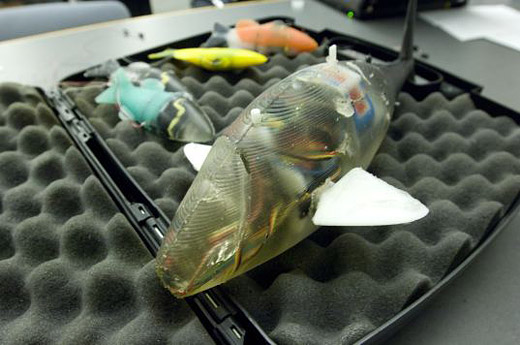
Designed at MIT, this robotic fish can swim to detect environmental pollutants in the water and inspect oil and gas pipelines.
Check Natalie Jeremijenko for interesting environmental monitoring projects that cross art and science, and imagine how good this could be for charting the flow of pollution in the Detroit River.
[via Inhabitat]
Eclipse – Park Pollution Visualization
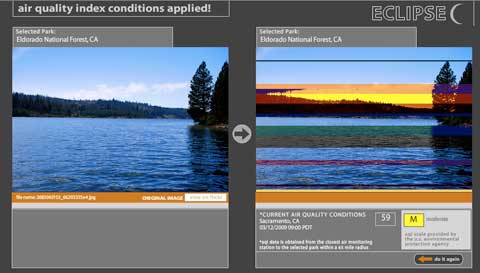
It seems I keep running into projects that attempt to visualize pollution levels. I’m not sure what intrigues me about this particular project, but I do connect with it on some level. I might just be drawn to projects which use real-time or near-real-time data. Here is a summary this project’s purpose.
“Eclipse is an interactive artwork that alters and corrupts appropriated photographs of United States national and state parks based on real-time Air Quality Index readings from the web (AQI or particle pollution data is available from airnow.gov). Eclipse was commissioned by Turbulence.org and was created by Cary Peppermint and Christine Nadir, who produce ecoarttech.net.”
In The Air
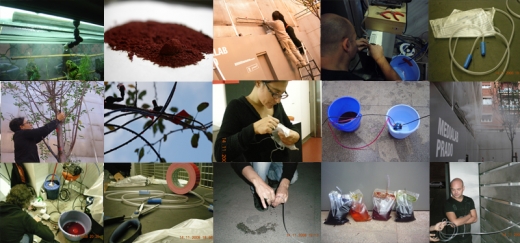
In The Air is a data visualization project initiated at MediaLab-Prado in Madrid. The project has taken a large dataset consisting of a year’s worth of air quality readings from Madrid and is beginning to realize a number of ways to make visible the invisible agents of the city’s air (gases, particles, pollen, etc). In The Air is using both web interfaces and physical prototypes for representing the data, and while the web component looks very slick, I’m considerably more interested in the physical parts.
I’m not sure how well the images read above, but those are some examples of their process as they work their way through Arduino-controlled contraptions that will spray out different colours of mist depending on the air quality data. There’s a video of one of their failed attempts on Serial Cosign, which is where I originally saw the project.
Seeing people do stuff is inspiring.
Mossenger by Anna Garforth
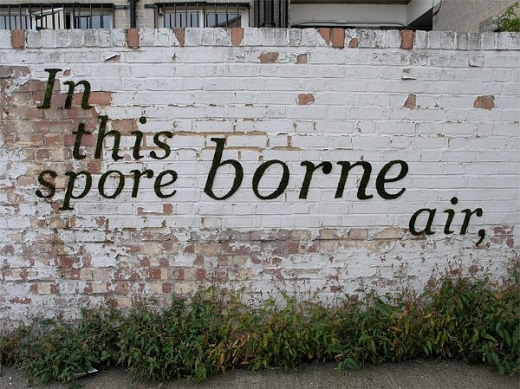
Anna Garforth is a designer and illustrator by trade, but has been working with environmentally themed public and community artworks as of late. Along with working with moss graffiti inMossenger, Garforth is also engaging in creating planters made by recycling milk containers in a project entitled Head Gardener, and then leading workshops to teach elementary school students how to do the same with Little Gardener.
[via]
Statlab by Tjerk Stoop
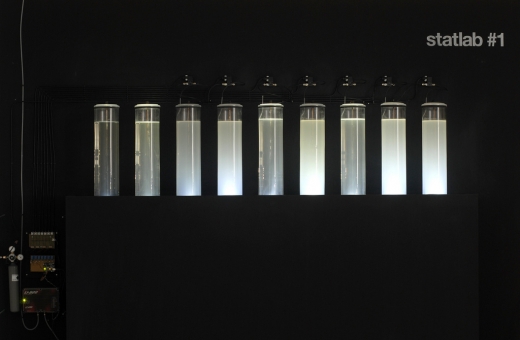
Statlab by Tjerk Stoop is an environmental art project, creating an analog visualization of air quality. From Stoop’s website, “It displays the daily average of CO2 concentration trough a chemical reaction where chalk particles are formed. The result is an analogue graph where the difference in the amount of chalk particles per tank is a global measure for the fluctuating CO2 concentration within one week.” Great to see physical/analog visualization presenting important data in a clear manner (well, assuming you read the accompanying text).
[via]
GOOD Magazine – Vampire Energy
GOOD Magazine has been creating a number of these short videos with great animations discussing and illustrating a variety of issues. This one, in particular, talks about “Vampire Energy,” the energy that appliances and electronics use, even if they’re in standby mode. Best practice is always to have your TV, computer, etc. connected to a power bar that can be shut off when not in use, thereby cutting the power completely.
I think the video is a good example of distributing knowledge effectively. They took existing information/data (about power consumption) and created an animation that does a better job at communicating it than a bar graph and table of numbers probably ever could.
